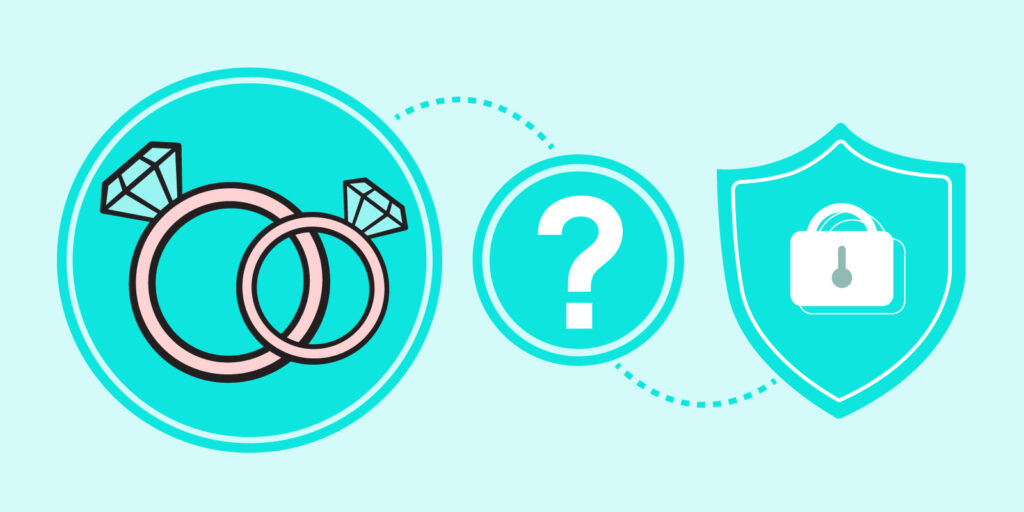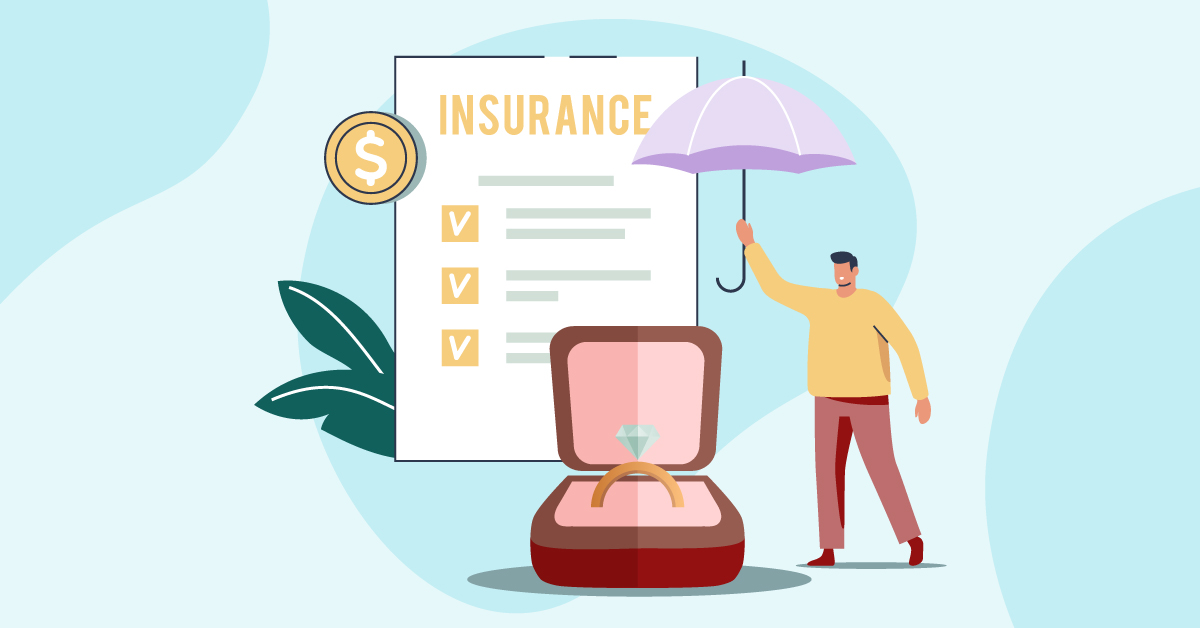Whether you have a one-carat diamond solitaire or a cluster ring made from white sapphire stones, an engagement ring has plenty of sentimental value. It’s also a big investment for the buyer. In 2020, couples spent an average of $3,756 per ring.
Although that’s less than the average spent in 2019, it’s still a significant chunk of money. Once you have an engagement ring in your possession, it’s important to protect that investment with an insurance policy. Learn more about insuring engagement rings and why it needs to be a priority.
Top 3 Reasons to Insure an Engagement Ring
Some people shy away from purchasing jewelry insurance because they don’t want to pay a monthly premium or don’t think they need coverage. If this describes you, keep reading to learn why it’s a good idea to insure your engagement ring.
1. High Value of the Ring
The Pink Star diamond sold for more than $57 million, but even if your ring isn’t nearly that much, a jewelry insurance policy still makes sense. Engagement rings are usually made from expensive materials, such as gold, platinum, diamonds, sapphires, and emeralds.
The cost of these materials increases over time, which means it may cost more to replace a lost or stolen ring than it did to buy the ring in the first place. Insurance protects high-value items, ensuring that you don’t have to dip into your own funds to replace them.
2. Low Cost of Jewelry Insurance
Jewelry insurance doesn’t cost much, so there’s really no reason not to have it on such an important possession. A stand alone jewelry policy typically costs around 1% to 2% of the value of the covered items, meaning it would cost just $50 to $100 per year to insure an engagement ring worth $5,000.
3. Additional Protection
Many people believe they don’t need jewelry insurance because they already have homeowners or renter’s insurance. Unfortunately, your homeowners or renter’s policy may not cover your engagement ring in full. Buying an inexpensive jewelry policy can help you avoid the heartbreak of having to pay out of pocket to replace a lost or stolen engagement ring.
Jewelry Insurance vs. Standard Insurance Coverage

Most pieces of jewelry are small. Unfortunately, that makes them a target for thieves who want valuable items that are easy to steal. As a result, a standard homeowners insurance policy typically has a limit of $1,500 for jewelry theft.
Even if you have a higher limit, your insurance company may limit the amount of coverage per item. For example, you may have $5,000 worth of jewelry coverage and a per-item limit of $2,500. That means a $3,000 ring wouldn’t be covered under your standard policy.
What’s Covered by Jewelry Insurance?
If you purchase a separate jewelry insurance policy, you can expect it to cover rings, watches, bracelets, necklaces and other valuable pieces of jewelry. Coverage is available for loss or theft, as well as damage caused by a problem specifically listed in the policy. For example, your jewelry insurance won’t cover damage caused by improper storage of your engagement ring, but it may cover damage caused by a house fire or if you lost your ring in the river.
Jewelry insurance doesn’t cover intentional damage, normal wear and tear, or damage that existed before you purchased the policy. Pest-related damage is also excluded.
Tips for Purchasing Jewelry Insurance
Now that you know how important it is to have jewelry insurance for your engagement ring, follow these tips to find just the right policy for your needs.
Check Your Existing Policy
If you already have homeowners or renter’s insurance, check your current policy. Look at the total coverage limit for jewelry and the per-item limit to determine if your existing limits are enough to cover your engagement ring. If you need more coverage, ask your insurance company to increase your current limits. Just make sure that the new limits are enough to cover your engagement ring and other pieces of jewelry. If they’re not, look for a jewelry floater or a standard jewelry insurance policy.
Supplement Your Existing Coverage
One way to overcome low jewelry coverage limits is to purchase a floater to add to your existing coverage. Floater coverage is for personal articles that are easy to move, such as jewelry, electronics, and fur coats. If you purchase this type of policy, you’ll have to provide an itemized list of jewelry to the insurance company. Your policy will list these items and spell out any coverage exclusions.
Purchase a Separate Jewelry Insurance Policy
If your engagement ring is extremely valuable, you may need to purchase a stand alone jewelry insurance policy to ensure you have the right amount of coverage. One benefit of buying a standalone policy is that jewelry claims won’t count against your homeowners’ insurance policy.
Standalone policies may also cover more than standard homeowners insurance. For example, if you chip the diamond in your engagement ring, a standalone policy may cover it even if your homeowners’ insurance doesn’t.
Top Jewelry Insurance Providers
Standalone jewelry policies are available through specialized insurance companies. Some of the top providers include BriteCo, PURE, and Jewelers Mutual.
BriteCo
BriteCo offers coverage of up to 125% of the appraised value of a piece of jewelry. It also sells policies designed specifically for engagement rings. One benefit of purchasing from BriteCo is that the company offers monthly payment options instead of requiring annual or semiannual payments.
PURE
PURE sells standalone insurance policies for people with a high net worth. The company offers discounts to responsible homeowners who have in-home safes and take other steps to keep their property safe. PURE also uses a streamlined adjustment process, reducing the amount of time it takes to replace or repair covered items.
Jewelers Mutual
Jewelers Mutual offers standalone jewelry policies with low deductibles for most customers, making it even more affordable to protect your engagement ring and other valuable items. The company also provides coverage for pieces valued at $25,000 or more; the deductible on one of these high-value pieces is much more than the standard $0, $100, $250, or $500 option.
Another benefit of working with Jewelers Mutual is that the company lets you select your preferred jeweler when replacing or repairing a covered item. Many other companies require you to work with specific jewelers.
Protection For Your Engagement Ring
Insurance policies offer protection for the most important things in your life, so why wouldn’t you want to include your engagement ring in your policy? With the low cost of a jewelry policy, many find that the peace of mind is more than worth it in case a ring is damaged, stolen, or lost. And with our list of specially selected carriers, it’s never been easier to add coverage for your ring.
You might also be interested in: Jewelry Insurance Explained: How to Protect Your Most Cherished Items





